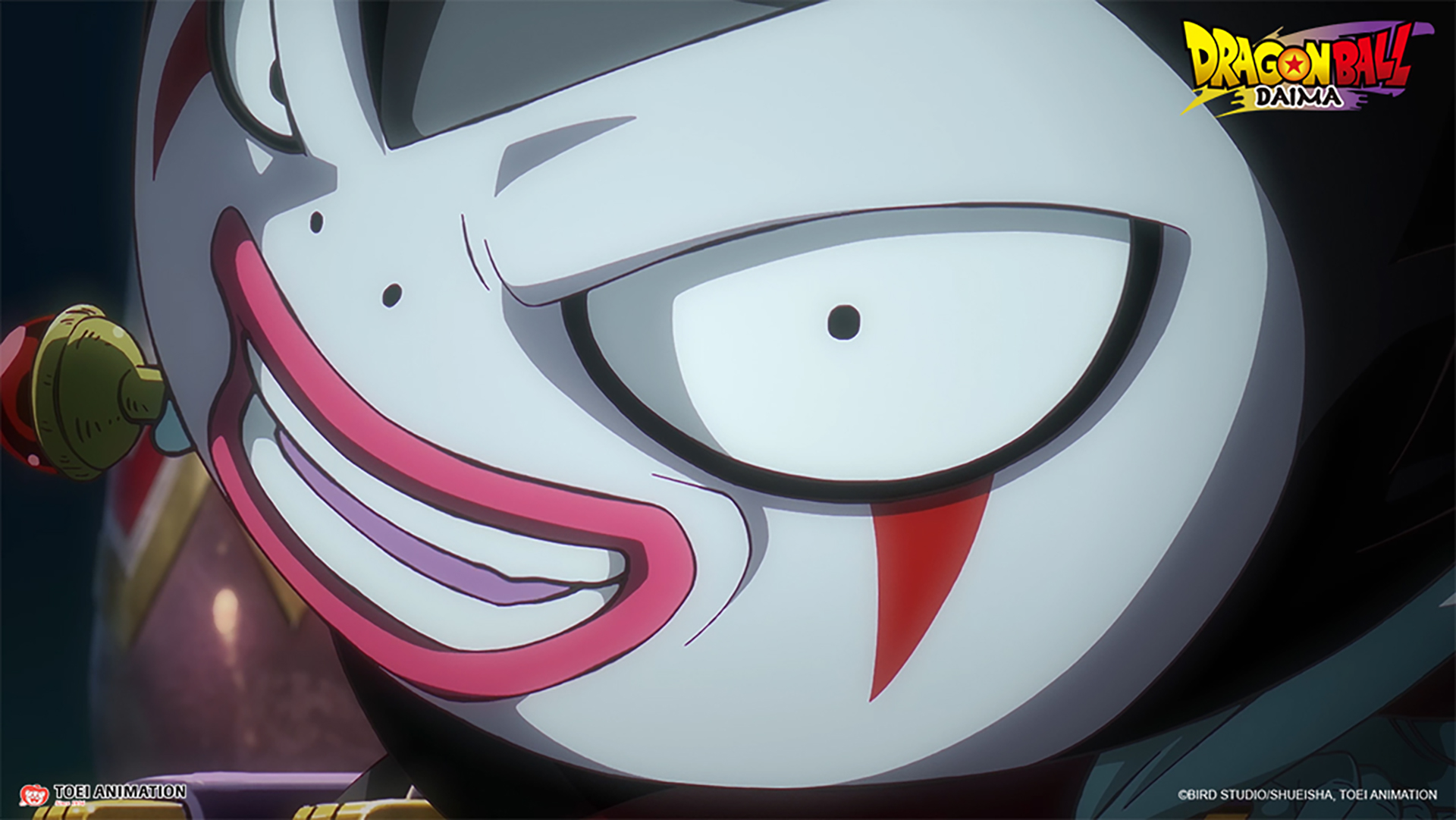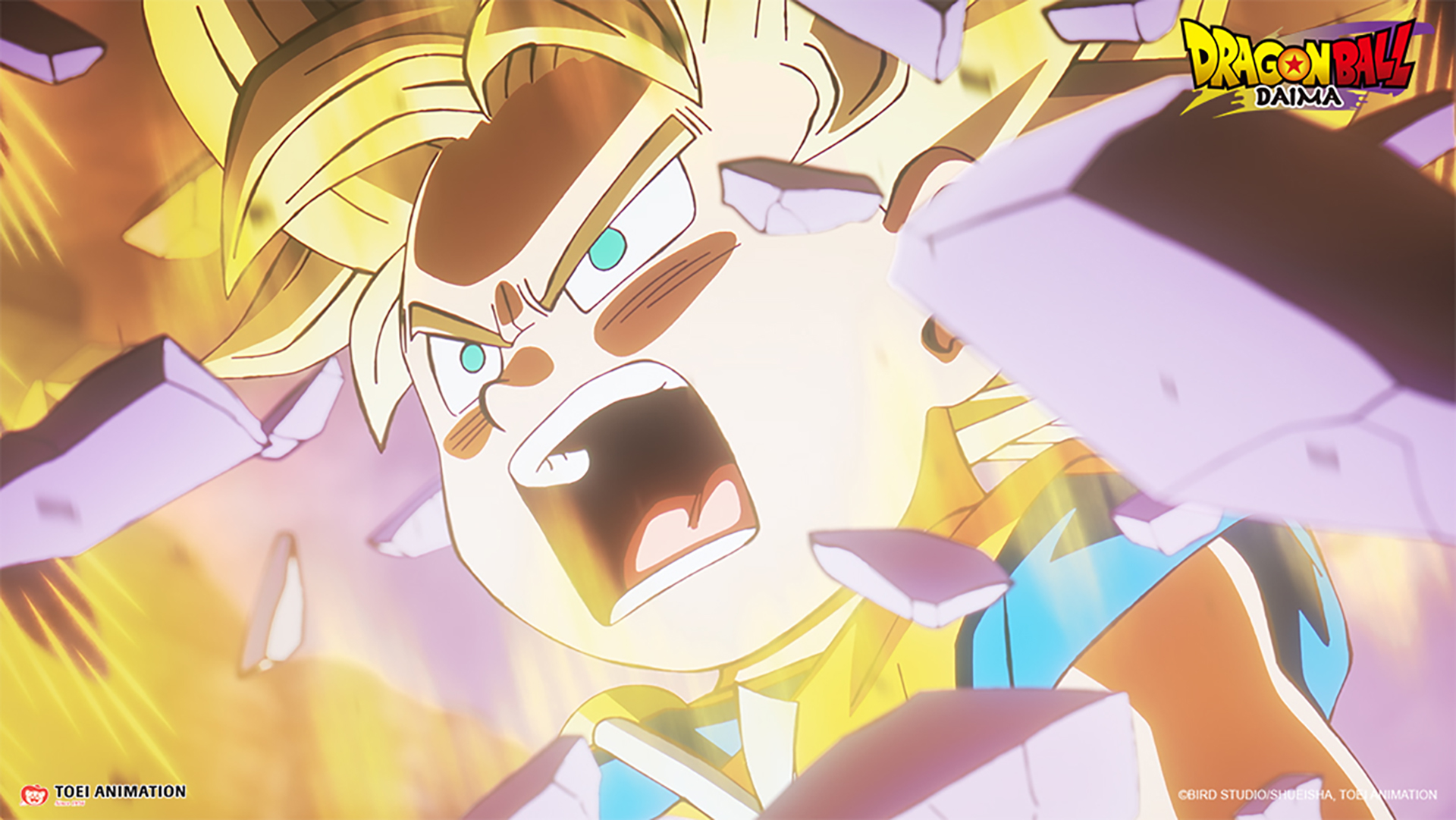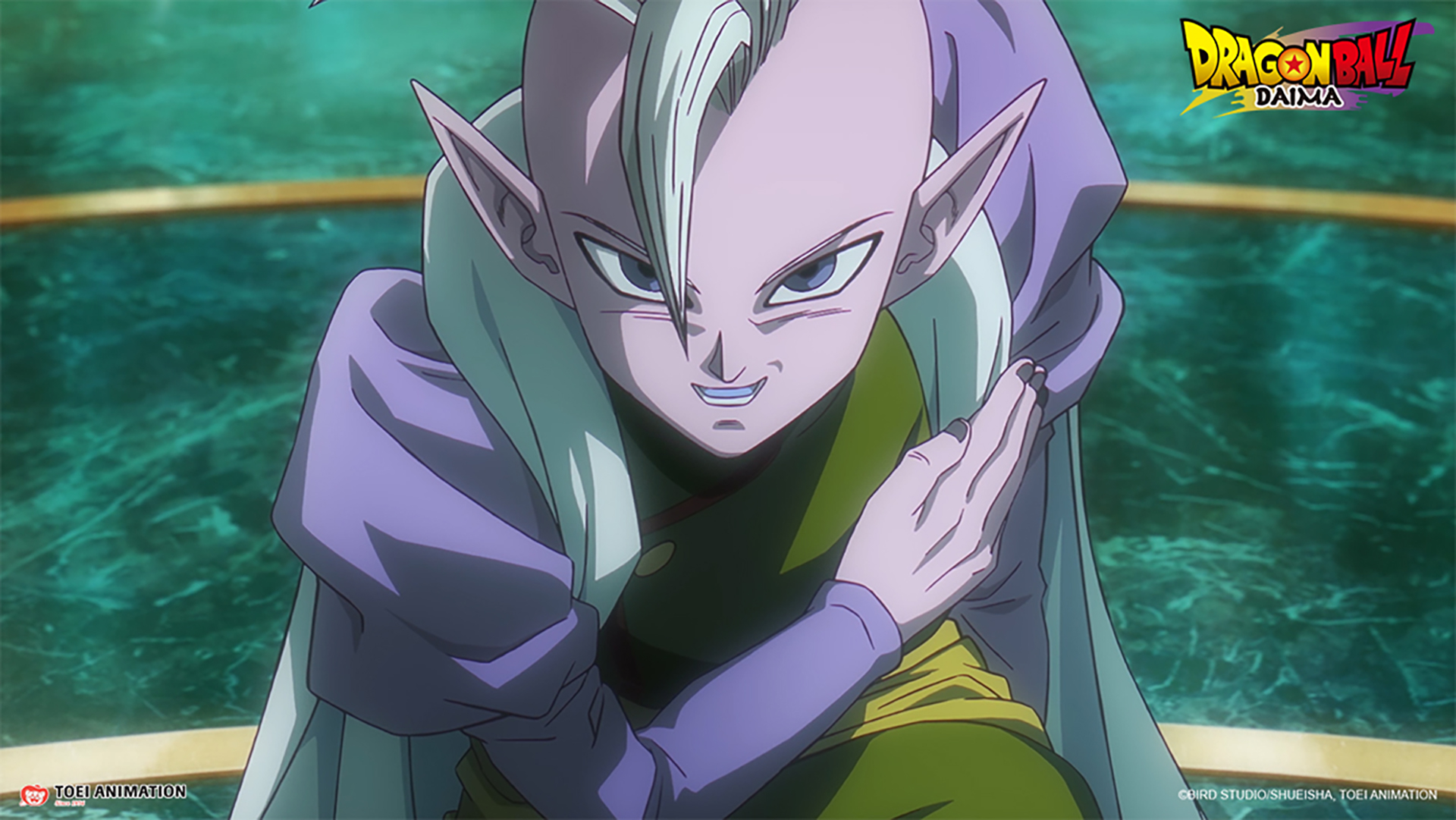Purrr....
- Great visuals
- Dubbed voice acting
Hisss!
- No clear separation between episodes 2 and 3
- Slow pacing after episode 1
Toei Animation and Fathom released a theatrical version of the first three episodes of Dragon Ball DAIMA in dubbed English. The event lasted for a few days, allowing fans to see and hear on the big screen the beginning of Goku’s newest journey.
A New Adventure Awaits

During the first episode, a new foe named Gomah, the new king of the Demon World, was granted a wish that turned Goku and all his friends into children (sound familiar?). Instead of labeling each character “kid”, the marketing team labeled them as “mini” to avoid confusion with other character variations in merchandise and video games.
Stephanie Nadolny (Dragon Ball, Dragon Ball Z, Dragon Ball GT), the prior English voice of young Goku, reprises her role for Goku’s mini form. Goku meets a new ally named Glorio, voiced by Aaron Dismuke (Full Metal Alchemist, Escaflowne: The Movie, Blue Lock), who came from the Demon World to have Goku stop Gomah’s actions there. They’re joined by Shin, a higher power character that was introduced in the last arc of the Dragon Ball Z series, who was also changed into a “mini” form. Shin’s new form is voiced by Nia Celeste (Demon Lord 2099, Frieren: Beyond Journey’s End, The Wrong Way to Use Healing Magic).
It’s a new adventure more about exploring than about battling strong opponents like you’d see in Dragon Ball Z. The first episode was packed with character introductions, surprising details about demons, and more ways to utilize the Dragon Balls. Longtime series viewers will also see flashbacks of the Majin Buu saga from Dragon Ball Z. Moreover, the new animation is done very well, so Dragon Ball fans will be drooling over the new visuals. To see it on the big screen is a delight.
The second episode was more story-building and showcasing the Demon World. It introduces Goku to the new transportation to get to the Demon World and shows how Goku needs to further adjust to not only his new, smaller body but also to the atmosphere in the Demon World. The third episode does pick up with a little more action, having demons try to pick a fight with Glorio and Goku. The short battle scene is fun and resembles what made the original Dragon Ball series fun.
After watching the first three episodes in both Japanese and English, you can’t go wrong either way. The voice actors for both languages do a superb job. Look forward to new episodes coming out.
A Special Event for All

With Dragon Ball DAIMA already airing since mid-October, the English dubbed version was getting ready to be released for Crunchyroll, Netflix, Hulu, and other paid streamers. Before coming out on those platforms, Toei Animation and Fathom came together for this limited theatrical release. With Dragon Ball being one of the most popular anime franchises in the world and DAIMA being the last work before creator Akira Toriyama’s unexpected death, the two companies wanted to do something extra special for fans.
Those who managed to attend were treated to a special prerecorded Q&A with Masako Nozawa, the original voice actor for Goku in Japan. However, the questions were generic such as “What do you think of Goku transforming into a Super Saiyan in his ‘mini’ form?” Regardless, fans of the series are happy to see she is still voicing Goku in Japanese.
Gotta Keep ‘Em Separated

Dragon Ball fans will appreciate the dubbed cast, even though the animation company could have done a better job separating the episodes better. The audience in the theater was confused when it ended, thinking there was one more episode remaining.
It didn’t help that the credits rolled after the first and third episodes but did not after the second one. The splash screen indicating the names of the episodes was only displayed for a short few seconds, too, making them easy to miss. One hopes that this small but noticeable confusion can be avoided for future events.
(Not) The Final Tour
Dragon Ball DAIMA’s theatrical event was a special treat, debuting its English dubbed voices, and fans of the series have something to look forward to in the weeks ahead. A word to Toei and company, though: tweak those episode transitions in the future!
An early screening provided for this review. Dubbed episodes can be watched through Crunchyroll and Netflix.








